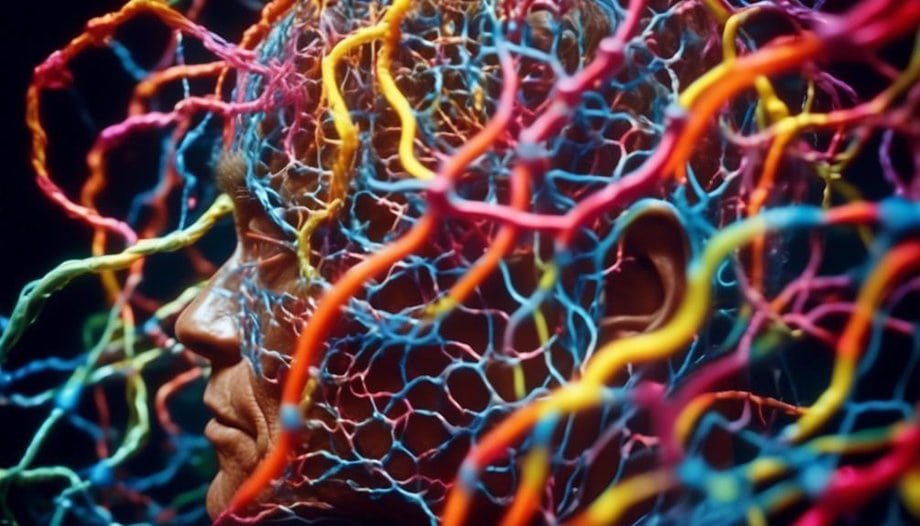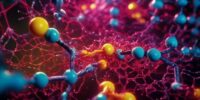First Demonstration of Brain Plasticity (1960s) – Hubel & Wiesel: Recap and Summary: Showed the Brain's Ability to Change

Hubel and Wiesel's groundbreaking study in the 1960s demonstrated the brain's ability to change and reshape itself. This study revealed the concept of brain plasticity and its implications for neuroscience research.
Key Takeaways
- Hubel and Wiesel played a pivotal role in shaping our understanding of brain plasticity.
- Their early research on the visual cortex of cats provided insights into the brain's ability to change.
- They discovered that neuronal connections in the brain are constantly forming and remodeling.
- Experience and environmental factors have a significant influence on brain plasticity, which is essential for learning and memory.
The Background of Hubel and Wiesel
Hubel and Wiesel, two renowned neuroscientists, played a pivotal role in shaping our understanding of brain plasticity. Their contributions in the field of neuroscience, particularly their early research, have provided significant insights into the brain's ability to change and adapt.
David Hubel and Torsten Wiesel conducted groundbreaking experiments in the 1960s that revolutionized our understanding of how the brain processes visual information. Through their research on the visual cortex of cats, they discovered the concept of 'ocular dominance columns.' These columns are specialized regions in the visual cortex that respond preferentially to input from one eye or the other. This finding demonstrated that the brain isn't fixed in its organization but rather has the remarkable ability to reorganize itself based on sensory input.
Hubel and Wiesel's research also revealed the importance of early sensory experiences in shaping the organization of the visual cortex. They found that if one eye was deprived of visual input during a critical period in development, the corresponding ocular dominance column in the visual cortex would fail to develop properly.
The Experiment Setup and Methodology
Now let's delve into the experiment setup and methodology.
To ensure reliable results, a carefully designed experimental design was implemented, which involved controlling variables and randomizing conditions.
The stimulus presentation involved presenting visual stimuli to the subjects in a controlled manner, allowing researchers to measure the brain's response.
Data collection methods included using specialized equipment to record neural activity and analyzing the collected data to draw meaningful conclusions.
Experimental Design
The experimental design for studying brain plasticity involves carefully planning and executing a series of controlled experiments to investigate the effects of various factors on neural changes. To ensure accurate and reliable results, the following methods are typically employed:
- Experimental Setup: Researchers establish a baseline by measuring the neural activity of the brain before any interventions or stimuli. This allows them to compare the changes that occur during and after the experiment.
- Controlled Variables: To isolate the effects of specific factors, researchers manipulate and control variables such as the type and intensity of stimuli, the duration and frequency of exposure, and the subject's background.
- Data Collection: Neural activity is recorded using techniques such as electroencephalography (EEG), functional magnetic resonance imaging (fMRI), or single-cell recordings. This data provides insights into the changes that occur in the brain.
- Data Analysis: Researchers analyze the collected data using statistical methods to identify patterns and correlations. This allows them to draw conclusions about the effects of different factors on brain plasticity.
Stimulus Presentation
To continue investigating the effects of various factors on neural changes, researchers carefully plan and execute their experimental design, including the setup and methodology for stimulus presentation. In the study of brain plasticity, stimulus presentation plays a crucial role in understanding visual perception and sensory adaptation. The researchers use a variety of visual stimuli to activate specific regions of the brain and observe the resulting neural changes. These stimuli can range from simple shapes and patterns to more complex images or videos. By presenting these stimuli repeatedly and measuring the brain's response, researchers can gain insights into how the brain adapts and changes over time. The table below provides an overview of different stimulus presentation techniques used in brain plasticity research.
| Stimulus Presentation Technique | Description | Purpose |
|---|---|---|
| Flashing lights | Rapidly varying light patterns or colors | Assessing visual perception and adaptation |
| Moving objects | Objects moving in different directions | Studying motion perception and adaptation |
| Visual illusions | Illusions that deceive the visual system | Investigating perceptual and cognitive processes |
Data Collection Methods
When collecting data for brain plasticity research, you carefully design and implement your experiment setup and methodology. To ensure accurate data analysis and maintain research ethics, consider the following:
- Standardized protocols: Use established guidelines to ensure consistency in data collection across participants and sessions.
- Ethical considerations: Obtain informed consent from participants, ensuring their rights and privacy are protected throughout the study.
- Blind assessments: Conduct blind assessments to minimize bias and ensure objective data collection and analysis.
- Data quality control: Implement measures to ensure data accuracy and reliability, such as double-checking recordings and monitoring participant compliance.
Key Findings and Observations
Through extensive research and experimentation, scientists have made significant discoveries and observations regarding brain plasticity. These findings have revolutionized our understanding of the brain's ability to change and adapt throughout our lives. One key finding is the existence of neuronal connections, which are constantly forming and remodeling in response to our experiences and environment. This phenomenon, known as cortical plasticity, allows the brain to reorganize itself and optimize its function.
To provide a visual representation of these findings and evoke emotions in the audience, let's take a look at the following table:
| Key Findings and Observations |
|---|
| Neuronal connections are constantly forming and remodeling |
| Cortical plasticity allows the brain to reorganize itself |
| Experience and environmental factors influence brain plasticity |
| Brain plasticity is essential for learning and memory |
| Neuroplasticity can be harnessed for rehabilitation and recovery |
These observations highlight the incredible potential of our brains to adapt and change. They demonstrate that our brains are not fixed entities, but rather dynamic and malleable structures that can be shaped by our experiences. This understanding opens up a world of possibilities for enhancing brain function, overcoming neurological disorders, and maximizing our cognitive abilities. By harnessing the power of brain plasticity, we can unlock our full potential and enjoy the freedom to continuously grow and develop throughout our lives.
Understanding Visual Development
Understanding visual development is crucial for understanding the complex processes involved in how our brains perceive and interpret visual information. It's fascinating to explore how our visual system develops and adapts to the world around us. Here are some key points to consider:
- The role of experience: Our visual system isn't fully formed at birth. It develops through a combination of genetic factors and sensory experiences. The brain's neural circuits responsible for vision are refined and strengthened as we interact with our environment. This process of experience-dependent plasticity allows us to recognize faces, objects, and navigate our surroundings.
- Critical period: Visual development follows a critical period, which is a specific timeframe during which the brain is most receptive to sensory input. This period is crucial for the development of visual acuity, depth perception, and other visual skills. If a child doesn't receive adequate visual stimulation during this critical period, it can lead to permanent deficits in visual function.
- Sensory deprivation: Experimental studies in animals have shown that depriving the visual system of sensory input during the critical period can have profound effects on visual development. For example, kittens raised in a dark environment with no exposure to light during this period develop permanent visual impairments.
- Plasticity in adulthood: While the critical period is a sensitive time for visual development, research has also shown that the adult brain retains some degree of plasticity. This means that even in adulthood, our visual system can adapt and change in response to new experiences and challenges.
Understanding the role of experience and the critical period in visual development provides valuable insights into the incredible plasticity of the brain. By studying these processes, researchers can develop interventions and therapies to help individuals with visual impairments or developmental disorders.
Implications for Neuroplasticity Research
As we explore the implications for neuroplasticity research, it becomes evident that understanding the role of experience and critical periods in visual development provides valuable insights into the incredible potential for the adult brain to adapt and change. This understanding has significant implications for neuroplasticity applications and brain remodeling.
Neuroplasticity refers to the brain's ability to reorganize itself by forming new neural connections throughout life. The groundbreaking research conducted by Hubel and Wiesel in the 1960s demonstrated that the brain isn't a fixed and unchangeable organ, but rather a dynamic structure that can be shaped by experience.
This knowledge has opened up new avenues for the treatment of neurological disorders and brain injuries. Neuroplasticity applications involve harnessing the brain's ability to rewire itself in order to facilitate recovery and improve function. For example, stroke patients can undergo rehabilitation programs that target specific areas of the brain, promoting the formation of new connections and restoring lost abilities.
Furthermore, understanding brain remodeling through neuroplasticity research has the potential to enhance learning and cognitive development. By optimizing the conditions and experiences that promote neuroplasticity, we can enhance our ability to acquire new skills, adapt to new environments, and overcome cognitive challenges.
The Impact on Neuroscience
Neuroplasticity research has revolutionized the field of neuroscience, providing groundbreaking insights into the dynamic nature of the brain and its capacity for change. This has had a profound impact on our understanding of how the brain works and how it can adapt and rewire itself in response to various factors. Here are some key ways in which neuroplasticity research has influenced the field of neuroscience:
- Understanding cognitive function: Studies on neuroplasticity have revealed that the brain isn't a fixed and static organ, but rather a highly flexible and adaptable one. This has helped researchers gain a deeper understanding of how cognitive functions, such as memory, attention, and language, are shaped and influenced by the brain's ability to rewire itself.
- Unveiling the mechanisms of brain rewiring: Neuroplasticity research has shed light on the specific mechanisms through which the brain rewires itself. It has shown that learning and experience can lead to changes in the connections between neurons, as well as the formation of new neurons and synapses.
- Enhancing learning strategies: The knowledge gained from neuroplasticity research has paved the way for the development of more effective learning strategies. By understanding how the brain changes and adapts, educators and learners can optimize their approaches to learning, leading to improved academic performance and skill acquisition.
- Unlocking the potential for brain rehabilitation: Neuroplasticity research has offered hope for individuals with brain injuries or neurological disorders. By understanding the brain's ability to rewire itself, researchers have developed rehabilitation techniques that can help restore lost functions and improve quality of life.
Criticisms and Controversies Surrounding the Study
Have there been any criticisms or controversies surrounding the study of brain plasticity? Yes, like any scientific study, the research on brain plasticity has faced its fair share of criticisms and controversies. Some critics argue that the findings of Hubel and Wiesel's study may only be applicable to cats and not necessarily to humans. They claim that the results cannot be generalized to the human brain due to species differences. Additionally, there have been debates regarding the extent of brain plasticity and whether it is truly a lifelong process or if it is more limited to certain developmental periods.
Controversies surrounding the study of brain plasticity have also emerged in terms of ethical implications. Some argue that the experiments conducted on animals to demonstrate brain plasticity may be unethical, as they involve invasive procedures. Critics argue that the benefits of studying brain plasticity should be weighed against the potential harm inflicted on animals.
Despite these criticisms and controversies, it is important to note that the study of brain plasticity has provided valuable insights into the brain's ability to adapt and change. Further research and advancements in technology will continue to shed light on this fascinating field, addressing some of the concerns and contributing to a better understanding of brain plasticity in both animals and humans.
| Criticisms | Controversies |
|---|---|
| Findings only applicable to cats | Ethical implications of animal experiments |
| Limited generalizability to humans | Potential harm inflicted on animals |
| Debates regarding the extent of brain plasticity |
Legacy and Ongoing Research in Brain Plasticity
Now let's explore the legacy and ongoing research in brain plasticity.
Current advancements in plasticity research have revealed the remarkable ability of the brain to reorganize and adapt throughout life.
This has significant implications for understanding and treating neurological disorders, as it suggests that the brain has the potential to recover and regain function even after injury or disease.
Through ongoing research, scientists are uncovering the mechanisms underlying brain plasticity and developing novel interventions to promote recovery and enhance brain function.
Current Advancements in Plasticity
Researchers continue to make significant strides in understanding and exploring the ever-evolving field of brain plasticity, uncovering groundbreaking insights into the mechanisms and potential applications of this phenomenon.
Here are some of the current advancements in plasticity:
- Neurofeedback training: Researchers are using neurofeedback techniques to enhance brain plasticity. By providing real-time feedback on brain activity, individuals can learn to regulate their brain patterns, leading to improved cognitive function and mental health.
- Non-invasive brain stimulation: Techniques like transcranial magnetic stimulation (TMS) and transcranial direct current stimulation (tDCS) are being used to modulate brain plasticity. These methods show promise in treating various neurological and psychiatric conditions, including stroke recovery, depression, and chronic pain.
- Cognitive training programs: Researchers are developing computer-based programs that target specific cognitive functions, such as memory or attention. These programs aim to improve brain plasticity and enhance cognitive abilities in healthy individuals and those with cognitive impairments.
- Rehabilitation interventions: Brain plasticity research is revolutionizing rehabilitation approaches for individuals with brain injuries or neurodegenerative diseases. By harnessing the brain's ability to rewire itself, clinicians can design personalized rehabilitation programs that promote recovery and functional improvements.
These advancements in brain plasticity research hold great potential for clinical applications, offering new avenues for enhancing brain function and improving the quality of life for individuals with neurological conditions.
Implications for Neurological Disorders
Understanding the implications of brain plasticity for neurological disorders is crucial for advancing research and developing effective treatment strategies. Neuroplasticity research has provided significant insights into the potential for the brain to adapt and reorganize itself in response to damage or dysfunction. This has opened up new possibilities for treating neurological disorders such as stroke, traumatic brain injury, and neurodegenerative diseases.
For example, studies have shown that rehabilitation programs focused on stimulating neuroplasticity can lead to improved motor function and cognitive abilities in stroke patients. Additionally, neuroplasticity-based therapies like transcranial magnetic stimulation and deep brain stimulation have shown promise in alleviating symptoms of conditions such as Parkinson's disease and depression.
Frequently Asked Questions
How Did Hubel and Wiesel's Findings Influence the Field of Neuroplasticity Research?
Hubel and Wiesel's findings revolutionized neuroplasticity research, influencing its trajectory and uncovering the brain's remarkable ability to change. Their work laid the foundation for further exploration while highlighting the limitations of neuroplasticity.
What Were the Specific Criticisms and Controversies Surrounding Hubel and Wiesel's Study?
Criticisms and controversies surrounding Hubel and Wiesel's study include concerns about methodology, sample size, and generalizability. Some argue that the findings may not apply to all types of brain plasticity.
How Has Ongoing Research in Brain Plasticity Built Upon Hubel and Wiesel's Initial Findings?
Ongoing research has built upon Hubel and Wiesel's initial findings by uncovering new research advancements and neuroplasticity applications. These advancements have expanded our understanding of the brain's ability to change and adapt.
Can Neuroplasticity Be Applied to Other Areas of the Brain, or Is It Limited to Visual Development?
Neuroplasticity isn't limited to visual development; it can be applied to various areas of the brain. It has shown promise in the rehabilitation of various conditions and plays a crucial role in cognitive development.
What Are the Potential Practical Applications of Understanding Brain Plasticity for Medical Treatments or Therapies?
Imagine the possibilities! Understanding brain plasticity opens doors for potential applications in medical treatments and therapies. It offers hope for innovative therapeutic treatments that can harness the brain's ability to change and heal.








